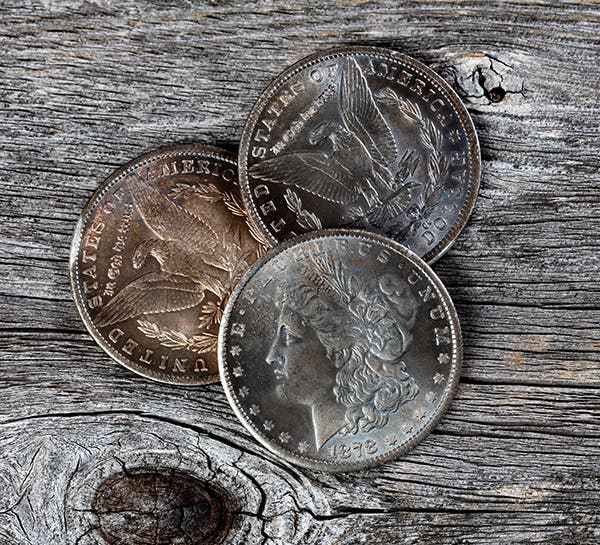1799 Bust dollar surprisingly available in Mint State
In almost every set of U.S. coins, there are going to be interesting dates and even a few surprises. You might call the 1799 Bust dollar one of those interesting…
In almost every set of U.S. coins, there are going to be interesting dates and even a few surprises. You might call the 1799 Bust dollar one of those interesting and surprising dates.
During the year prior, the Bust dollar’s reverse design had been changed to a Heraldic eagle. This would serve as the final design for the Bust dollar. The change, however, did not alter the coin’s popularity.
At the time, it was the policy of the Mint to allow suppliers of silver and gold to select the denominations they wanted made from their metal. Silver dollars and gold eagles were the most popular choices.
We see this situation reflected not only in the silver dollar mintage of the period but also in the lack of mintages for other denominations. Quarters were rarely produced, for example, but dollars were being struck by the hundreds of thousands.
There was another factor at play in the case of silver, especially: the smaller denominations were needed for commercial activity. The nation had a coin shortage, and no progress was being made toward rectifying it while the Mint was busily striking silver dollars.
To make matters worse, these silver dollars were, in many cases, being exported. Some might come back, but nowhere near the total leaving the country. This would lead to the suspension of silver dollar production in 1804; but back in 1799, it was definitely business as usual.
In fact, mintage for the 1799 silver dollar was a record total of 423,515 pieces. That total, however, was split up numerous ways with varieties. There were normal dates and irregular dates, different numbers of stars, and a host of other varieties, making the 1799 Bust dollar a collection by itself with a large number of possibilities.
Back in 1799, of course, there was virtually no one who would have cared about the varieties or anyone who would have been looking for them. After all, there were very few people who collected coins at the time and fewer still who would have collected silver dollars, since that represented a great deal of money for most Americans.
The natural assumption would be that very few 1799 Bust dollars of any variety were saved at the time. Most of the examples that are discovered today would grade VF-20 or XF-40. The most available run perhaps $800 in G-4 condition; VF-20 coins are priced at $2,300; XF-40 coins are $4,500; and MS-60 coins are $20,000.
You would expect to find very few Mint State examples of the 1799 Bust dollar, as is also the case for any other year. Despite the fact that they are almost never seen, however, Numismatic Guaranty Corporation reports show a total of 93 examples have been called Mint State, with the best being a single MS-67.
That is a very impressive number for a silver dollar from 1799. NGC is not alone in this finding, as the Professional Coin Grading Service reports a total of 105 examples in Mint State, including two in MS-66.
Certainly some of the coins may have been graded more than once. But the fact remains that, by a very solid margin, the 1799 is the most available Bust dollar in Mint State. It was probably not a hoard that produced such numbers but a heavy mintage and individual pieces being saved for one reason or another.
Whatever the reason, if you want a Mint State Bust dollar, consider the 1799.
This article was originally printed in Numismatic News. >> Subscribe today.
More Collecting Resources
• Keep up to date on prices for Canada, United States and Mexico coinage with the 2017 North American Coins & Prices guide.
• Start becoming a coin collector today with this popular course, Coin Collecting 101.








